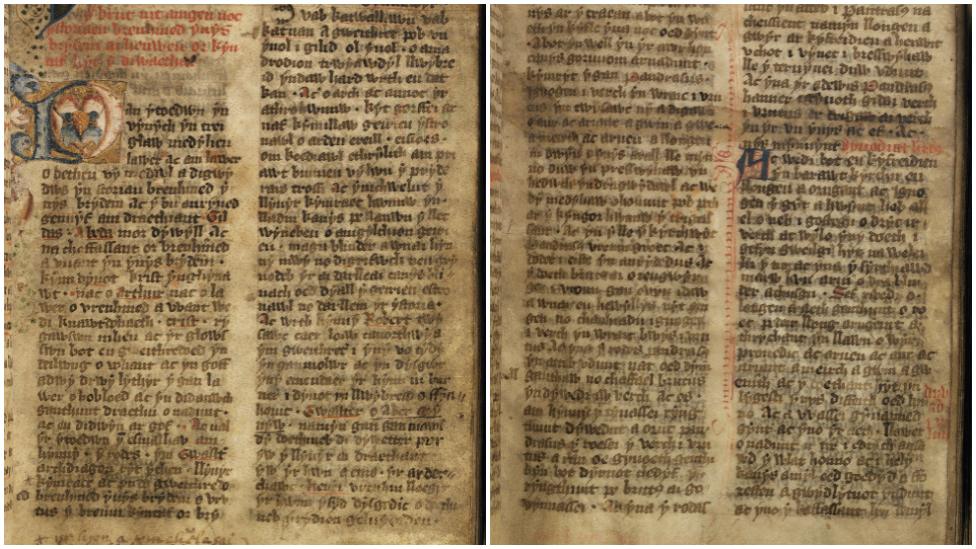Delving into the Welsh Dark Ages
- Published

Pages from the Black Book of Basingwerk which contain Welsh Chronicle texts
Manuscripts chronicling the history of Wales and Britain from Roman rule onwards are a new focus for experts.
The Welsh Chronicles are a collection of texts that both attempt to mark historical events - and according to some - act as propaganda.
It has been suggested that some of the texts even urge the Welsh to rise up against their Saxon oppressors.
Historians have gathered at St John's College, Cambridge, for a two-day conference examining the collections.
The manuscripts are scattered across Wales and England, with some held at the National Library of Wales, others at the British Library, and some of them at places like Exeter Cathedral.
They bear imposing names like 'Epitome Historiae Britanniae' and 'Brut y Tywysogion' - chronicling events from the death of the last king of Britain, Cadwaladr, in AD682, through to the 14th Century medieval Wales.
"Standard histories of early Wales are based heavily on the chronicles, but we as scholars could do so much more to question the circumstances in which they were written, or what they really tell us as a result," argued Anglo-Saxon PhD student Rebecca Thomas.
Exeter Cathedral is home to the Welsh Chronicle text 'Cronicon de Wallia'
The Cambridge University scholar is one of those who has helped pull together the conference, along with Bangor University and Harvard in America.
"They are a great resource, but one that we need to understand far more than we currently do," she said.
In Wales, chronicles were being written in various monasteries from no later than AD800, and remained the primary form of record-keeping for centuries.
Written in Latin and Welsh, they often provided a uniquely Welsh perspective on history.
The most famous are the Annales Cambriae (or Annals of Wales), which records key points from the 5th Century onwards.
But researchers have become increasingly aware that rather than just a list of historical events, these documents are a complex collection of different texts grouped under one name, and belong to a much wider group of chronicles overall.
In some cases, little is known about who wrote them, how they were compiled, or how they were influenced by the politics of their age.
The Brut y Tywysogion held by the National Library of Wales dates to about 1330
In the 9th Century Historia Brittonum (History of the Britons), for instance, the text can be read as a call for the Welsh to move on from their displacement by the Anglo-Saxons in England - or equally - it can be read as a rallying cry to rise up.
"The fact that you can get two views which are so dramatically different shows how enigmatic it still is as a text," added Ms Thomas.
"Understanding the Chronicles better will transform our perception, not only of how the Welsh viewed themselves as a people, but also how they incorporated other groups into their own history."
- Published15 October 2014
- Published15 February 2013
- Published23 September 2014